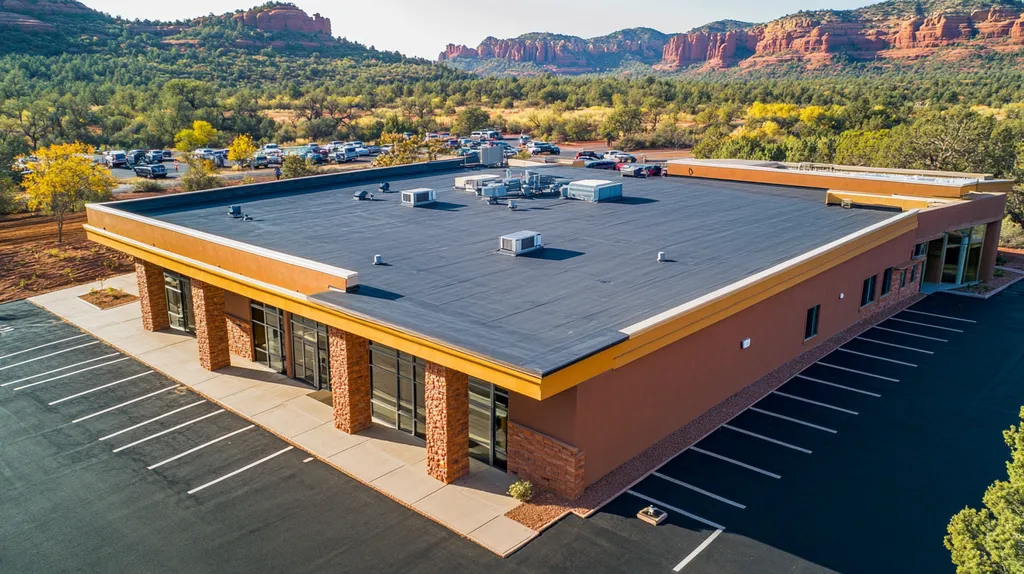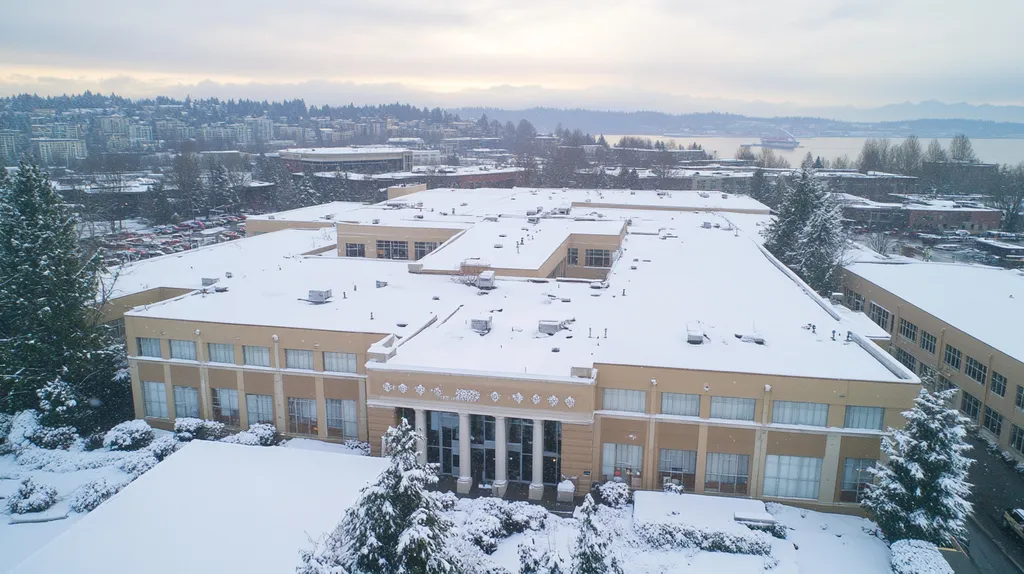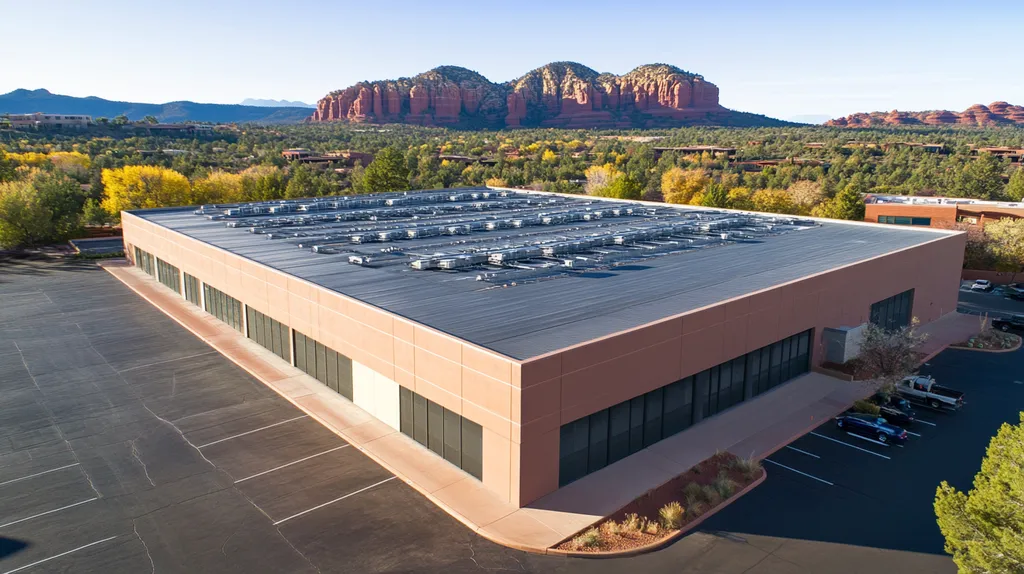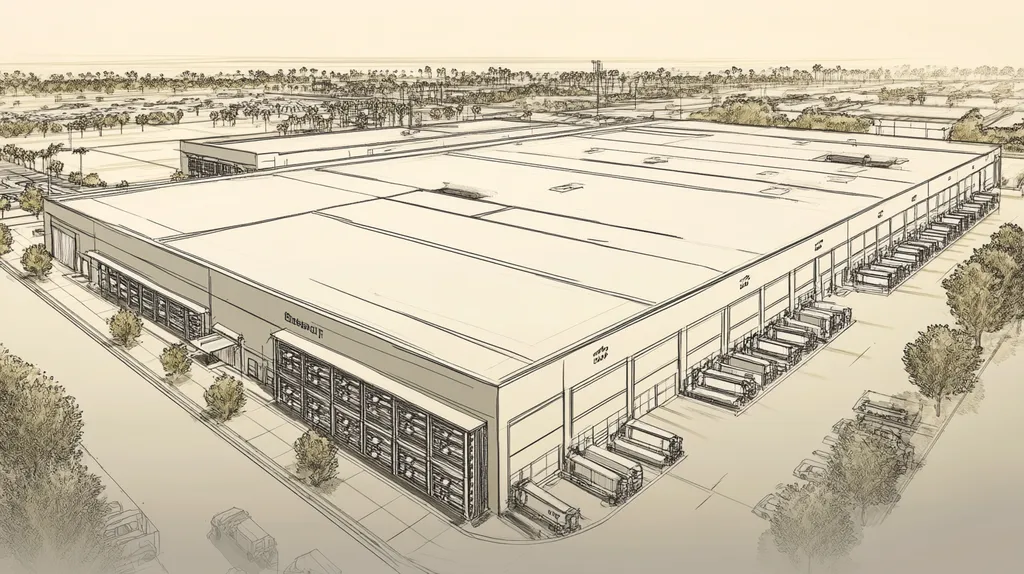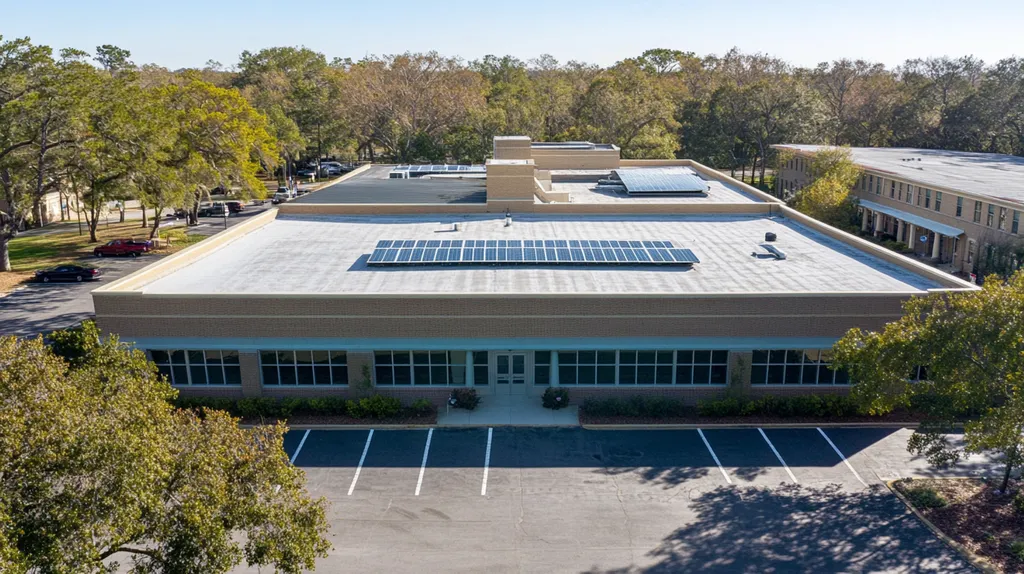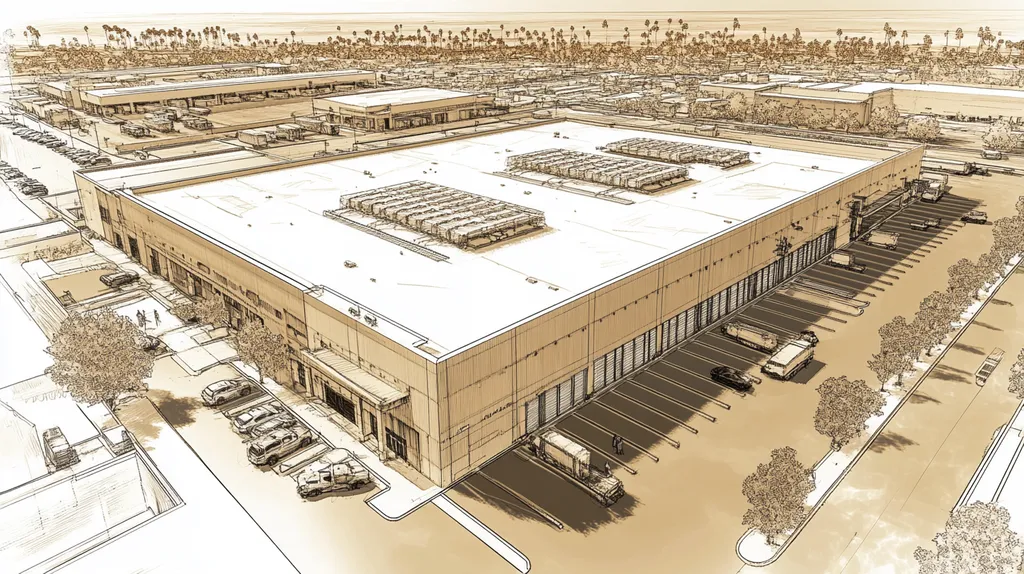Every year, commercial building owners lose millions due to improperly applied roof coatings that fail to meet crucial safety standards. Industry data shows that 40% of coating failures stem directly from regulatory non-compliance.
For facility managers, navigating the complex web of coating safety regulations has become increasingly critical as enforcement intensifies and penalties multiply. From OSHA requirements to environmental mandates, staying compliant requires a systematic approach.
This comprehensive guide examines the essential performance factors, financial considerations, and compliance protocols needed to ensure coating safety while maximizing roof protection and longevity. Through actionable checklists and proven strategies, facility managers can implement safety-first coating programs that stand up to scrutiny.
SECTION 1: PERFORMANCE FACTORS
Safety regulations surrounding coatings on commercial roofs are crucial for ensuring a building’s longevity and effectiveness. These standards aren’t just bureaucratic hurdles; they have a direct effect on safety, energy efficiency, and overall operational performance. For instance, inadequate adhesion can result in costly leaks, while insufficient surface preparation can compromise a coating’s durability. Facility managers must prioritize these performance factors to maintain compliant and effective roofing systems.
Evaluating Roof Surface Compatibility and Preparation
Understanding the compatibility between the roof surface and coating is essential. Different roofing materials—like TPO, EPDM, or built-up roofs—demand specific preparation methods to create a strong bond. A dirty or poorly cleaned surface can severely hinder the performance of the coating, resulting in future issues.
Proper preparation typically includes cleaning, addressing repairs, and priming, with techniques tailored to each roof type. For example, applying a primer on a metal roof can significantly enhance adhesion and prolong the coating’s lifespan. Facility managers should refer to manufacturer guidelines to confirm that preparations align with safety regulations.
Failure to adequately prepare the surface can not only diminish performance but may also lead to compliance problems with safety regulations. Thus, thorough evaluation of the roof surface prior to coating application is vital for protecting investments and ensuring durability over time.
Key Action Items
Assessing Coating Adhesion and Weather Resistance
Adhesion is a critical factor that determines the effectiveness of roof coatings. Facility managers must ensure that the selected coating bonds well with the prepared surface. Poor adhesion can result in delamination, where the coating separates from the substrate, leading to significant failures, especially under adverse weather conditions.
Manufacturers perform adhesion tests to evaluate how well a coating can stick to surfaces. This data is crucial for facility managers when selecting appropriate products. For instance, coatings with high tensile strength and elongation properties are ideal for enduring extreme temperature shifts, thereby enhancing their weather resistance.
Weather resistance is essential for protecting the roof from rain, hail, and UV damage, as a quality coating can significantly extend the overall lifespan of the roof. Facilities located in regions susceptible to severe weather must carefully choose coatings that comply with local safety standards regarding durability.
Key Action Items
Monitoring Energy Efficiency and Reflectivity Benefits
The energy efficiency of roof coatings significantly affects long-term operational costs. Reflective coatings play a pivotal role in reducing heat absorption, consequently lowering cooling expenses in warmer climates. Facility managers should look for coatings that meet standards from recognized programs like Energy Star or the Cool Roof Rating Council (CRRC) to ensure optimal energy performance.
Tracking energy performance is essential for adhering to increasing energy regulations. For example, a highly reflective coating can lower the surface temperature of the roof, mitigating the urban heat island effect while supporting sustainability initiatives.
Furthermore, improved reflectivity contributes to extending a roof’s lifespan by reducing thermal stress. Facility managers should request reflectivity ratings and energy efficiency data when selecting coatings. This information is vital for complying with safety regulations that prioritize energy standards.
Key Action Items
SECTION 2: FINANCIAL CONSIDERATIONS
Making decisions about roofing coatings has considerable financial implications. Facility managers often find themselves weighing the options between applying a coating to an existing roof or pursuing a full replacement. Studies have shown that using a coating can prolong a roof’s lifespan while avoiding the substantial costs associated with replacement. Understanding the financial landscape, from cost-benefit analyses to budgeting and projecting energy savings, is essential for informed decision-making.
Cost-Benefit Analysis of Coating Versus Replacement
A comprehensive cost-benefit analysis is vital for determining whether to coat a roof or replace it outright. Although the initial expense for coatings can seem high, the long-term financial benefits often outweigh these upfront costs. For instance, a facility that faces a $150,000 replacement could save nearly 30% by choosing to apply a coating instead.
Furthermore, coatings typically require less immediate investment, making them attractive for tight budgets. It’s essential to evaluate not only initial costs but also the potential value of years added to the roof’s lifespan.
Another significant consideration is the potential downtime associated with full roof replacements, which can disrupt operations and increase costs. On the other hand, the application of coatings frequently allows businesses to remain fully operational during the process.
Key Action Items
Budgeting for Material, Labor, and Maintenance Expenses
Effective budgeting plays a critical role in any roofing project involving coatings. The costs of materials for high-quality roof coatings typically range from $1 to $3 per square foot—substantially less than full roof replacements. However, proper planning for labor costs is crucial, as specialized contractors may be necessary for application.
Ongoing maintenance is also an essential budget consideration. Though coatings generally reduce maintenance needs, some situations may still require periodic inspections or touch-ups. Setting aside funds for expected maintenance will help ensure performance without unexpected financial burdens.
Facility managers should work with roofing professionals to ensure accurate cost estimations that accommodate both immediate and long-term project expenses. Adequate budget plans lead to smoother project execution and a significant reduction in unnecessary costs over time.
Key Action Items
Projecting Long-Term Savings from Energy Efficiency
Roof coatings not only help maintain structural integrity but can also significantly drive energy efficiency. Reflective coatings, for instance, can lower cooling costs by as much as 30%, resulting in considerable annual savings for large commercial buildings—potentially amounting to thousands of dollars each year.
This aspect of energy efficiency enhances the financial rationale for using coatings, often providing impressive returns on investment. For example, if a facility invests $10,000 in a coating that saves $3,000 annually, the payback period can be remarkably brief.
Additionally, many local governments and energy organizations offer rebates or incentives for energy-efficient upgrades, further bolstering cost savings. Taking advantage of these opportunities can maximize financial returns and reinforce the value of making energy-conscious decisions.
Key Action Items
SECTION 3: COMPLIANCE REQUIREMENTS
Compliance with safety regulations for roofing coatings is not merely a checkbox; it is essential for protecting workers on-site and safeguarding property. Ignoring these regulations can lead to hazardous conditions, hefty fines, and even lawsuits. Notably, over 20% of workplace fatalities are attributed to falls, highlighting the importance of safety in roofing activities. This section delves into critical compliance areas, including OSHA standards, environmental regulations, and fire resistance mandates.
Understanding OSHA Safety Standards for Roof Coatings
The Occupational Safety and Health Administration (OSHA) has established stringent standards that govern safety practices for roofing work. Adhering to these guidelines is non-negotiable and serves to protect both workers and the facilities they serve. For example, roofs need to have appropriate fall protection systems in place for any worker at risk of falling six feet or more.
Moreover, OSHA requires training for workers on personal protective equipment (PPE), ensuring they are adept at safely applying roof coatings. This safety training includes the proper use of respirators and eye protection when dealing with hazardous materials. Conducting regular safety audits can identify compliance gaps and bolster a safety-first culture within roofing teams.
Employers must maintain a clean worksite to avoid slips and other mishaps, in line with OSHA’s “housekeeping” provisions. By upholding these safety standards, facility managers can significantly reduce accidents and their associated costs.
Key Action Items
Navigating Environmental and Energy Efficiency Regulations
Environmental regulations governing roofing coatings are becoming increasingly stringent, and non-compliance can spell trouble for facilities. Many coatings and adhesives contain volatile organic compounds (VOCs), which are known to negatively impact air quality. The Environmental Protection Agency (EPA) has set guidelines limiting VOCs in roof coatings to address these concerns.
Facility managers must verify that the coatings utilized align with both local and federal emissions standards. For instance, California’s Air Resources Board (CARB) regulations require low-VOC products, which can also enhance energy efficiency. This not only benefits the environment but can also lower energy costs through improved roof reflectivity.
Moreover, certifications such as ENERGY STAR and those from the Cool Roof Rating Council can greatly inform purchasing decisions. Ensuring compliance with these certifications helps facility managers make environmentally sound choices that align with sustainability initiatives.
Key Action Items
Ensuring Fire Resistance and Building Code Adherence
Fire resistance is a vital compliance aspect for roof coatings, particularly in industrial and commercial settings. Building codes typically incorporate specific requirements for fire-rated roofing materials to mitigate fire hazards. These stipulations are especially critical in areas prone to wildfires and should be a top priority.
Facility managers must confirm that all roofing materials conform to local fire safety codes. Utilizing Class A rated roofing systems can significantly inhibit the spread of fire, thus protecting the structure. Conducting regular inspections and updates to roofing systems ensures continued compliance with these essential codes.
Additionally, working with local fire marshals during the installation phase can provide insights into site-specific regulations. Non-compliance with fire safety standards can trigger catastrophic outcomes, including financial loss and threats to life.
Key Action Items
SECTION 4: RISK MANAGEMENT
Effective risk management is vital to ensuring safety during the coating process for commercial roofs. Ignoring structural weaknesses can lead to extensive damages and hazardous working conditions. According to the Occupational Safety and Health Administration (OSHA), improper installation practices not only risk worker safety but can also interrupt business operations. This section highlights critical areas of risk management, focusing on identifying structural vulnerabilities, mitigating installation hazards, and preparing for potential contingencies.
Identifying Structural Vulnerabilities Before Coating
Before applying any coatings, a meticulous assessment of the roof’s structure is essential. Property managers must thoroughly check for signs of deterioration, degradation, or hidden damage. Overlooking these issues can lead to catastrophic roof failures post-application.
Vulnerabilities such as rusted metal decking or compromised seams can profoundly affect the roof’s integrity. Rather than resolving these issues, coatings may inadvertently encase them, presenting a hidden liability. Regular inspections can help catch these vulnerabilities early, enabling timely repairs.
Moreover, it is crucial to review applicable building codes and standards to ensure compliance. Each roof has unique load-bearing capacities, which may be impacted by the additional weight of the coatings, necessitating thoughtful evaluation.
Key Action Items
Mitigating Installation Hazards and Worker Safety Risks
Worker safety is paramount in the coating application process. Facilities must establish clear guidelines to manage installation hazards, especially when dealing with chemicals and elevated workspaces. For instance, ensuring adequate ventilation can protect workers from harmful fumes that may compromise health.
Providing protective gear, such as respirators and harnesses, plays a critical role in safeguarding workers throughout the application. Regular safety training enables employees to recognize potential hazards, minimizing accident risks.
Additionally, facility managers should monitor weather conditions vigilantly. Excessive wind, rain, or extreme heat can increase hazards during installations, warranting the suspension of work when risks escalate. This vigilance ensures worker safety while preserving the integrity of the coating application.
Key Action Items
Planning for Weather-Related and Maintenance Contingencies
Weather plays a significant role in determining the success of roof coatings. Thoughtful planning for weather contingencies is vital in the coating application process. Given that coatings generally require specific temperature and humidity levels for optimal adhesion, these factors must be included in project schedules.
Developing a contingency plan for adverse weather conditions can help prevent delays or necessitate rework. For example, heavy rain soon after application could demand re-inspection to ensure proper adhesion of the coatings.
Moreover, ongoing maintenance is critical after installation. Regular monitoring can help detect wear or damage induced by fluctuating weather, allowing for timely repairs before issues escalate. This proactive approach contributes to extending the lifespan of roofs while enhancing workplace safety.
Key Action Items
SECTION 5: OPERATIONAL PROCEDURES
In the realm of commercial roofing, adhering to safety regulations for coatings is essential. Research highlights that improper application can lead to severe structural issues, incurring thousands in repair costs. To safeguard a building’s integrity, facility managers must establish effective operational procedures. This section details vital steps such as surface preparation, application sequencing, and documentation processes.
Standardizing Surface Cleaning and Pre-Application Checks
Surface preparation is a critical phase in the coating process that should never be overlooked. Contaminants like dust, dirt, and moisture can drastically hinder adhesion. Facility managers must implement standardized cleaning protocols outlining methods for debris removal and contaminant control.
For instance, using pressurized water jets can ensure that surfaces remain clear of particulates. Additionally, incorporating pre-application checks can help identify issues like cracks or wear that need addressing before coating. This proactive strategy adheres to safety regulations and enhances the durability of the coating system.
It’s imperative to train staff in these procedures, establishing clear responsibilities with checklists to enforce consistency and accountability. Deviating from these protocols can compromise performance and introduce safety risks, reaching far beyond aesthetic concerns.
Key Action Items
Sequencing Coating Application for Optimal Performance
The correct sequence in the coating application process significantly impacts a commercial roof’s durability and safety. A systematic approach to applying coatings enhances curing and adherence, reducing the chance of early degradation.
For instance, starting with a primer can strengthen the bond between the substrate and subsequent layers. Facility managers should also monitor environmental factors like temperature and humidity, which can alter drying times and curing rates for the coatings.
Having a clear sequencing protocol boosts crew efficiency and ensures that each layer is allowed adequate time to cure before the next is applied. Overlooking this step risks delamination, which can compromise the roof’s integrity in the long run.
Key Action Items
Establishing Inspection and Documentation Protocols
Robust inspection and documentation protocols are crucial for ensuring compliance with industry safety standards. Facility managers must conduct regular inspections during and after the coating application to ascertain adherence to application specifications.
A comprehensive inspection checklist can assess critical aspects such as coat thickness, uniformity, and visible defects. Documenting these findings allows for tracking coating performance over time, essential for spotting trends that may indicate necessary interventions.
Moreover, maintaining thorough documentation aids organizations in preparing for potential regulatory audits, demonstrating compliance with safety standards. This level of transparency can enhance accountability among contractors and emphasize the importance of following established protocols.
Key Action Items
SECTION 5: OPERATIONAL PROCEDURES
In the complex field of commercial roofing, following safety regulations for coatings is imperative. Research indicates that improper coating application can lead to long-term structural damage, potentially costing facilities thousands in repairs. To maintain the integrity of a building, facility managers must implement robust operational procedures. This section outlines key steps such as surface preparation, application sequencing, and documentation protocols.
Standardizing Surface Cleaning and Pre-Application Checks
Surface preparation represents a critical phase in the coating process that should never be underestimated. Contaminants like dust, dirt, and moisture can significantly impair adhesion. Thus, facility managers should enforce standardized cleaning protocols that clearly define methods for debris removal and contaminant management.
For example, employing pressurized water jets can ensure surfaces are free from particulate matter. Furthermore, pre-application checks enable the identification of existing issues—like cracks or worn areas—that require attention before coating. This proactive strategy not only complies with safety regulations but also enhances the durability of the coating system.
Training employees on these procedures is essential. Clearly assigning responsibilities and developing checklists fosters consistency and accountability. Any deviation from these protocols can jeopardize performance, leading to safety hazards that extend beyond mere aesthetic concerns.
Key Action Items
Sequencing Coating Application for Optimal Performance
Proper sequencing in the coating application process can greatly influence a commercial roof’s longevity and safety. Following a systematic order increases adherence and curing efficiency, reducing the risk of premature degradation.
For instance, beginning with a primer can significantly bolster the bond between the substrate and the subsequent topcoat. Facility managers should also keep in mind environmental factors like temperature and humidity, as these can alter the drying times and curing processes of the coatings.
Implementing a clear sequencing protocol enhances crew efficiency by ensuring each layer receives adequate curing time before applying the next. Neglecting this critical step risks delamination, ultimately compromising the roof’s integrity over time.
Key Action Items
Establishing Inspection and Documentation Protocols
Implementing thorough inspection and documentation protocols is essential for maintaining compliance with industry safety standards. Facility managers should carry out regular inspections during and after the coating process to verify adherence to application specifications.
Developing an inspection checklist allows for the assessment of vital aspects including coat thickness, uniformity, and visible defects. Consistent documentation facilitates monitoring the coatings’ performance over time, thus enabling the identification of trends that may warrant intervention.
Moreover, meticulous documentation of inspection findings prepares organizations for potential regulatory audits, showcasing their compliance with safety standards. This level of transparency also fosters accountability among contractors, emphasizing the significance of adherence to established guidelines.
Key Action Items
Looking Ahead
With commercial roof coating failures costing facility owners over $400 million annually in repairs and replacements, adherence to safety regulations has never been more critical.
The rising complexity of coating technologies, combined with increasingly stringent environmental and safety standards, demands a systematic approach to compliance.
Studies show that facilities implementing comprehensive coating safety protocols reduce failure rates by 65% while extending roof life by up to 15 years.
As sustainability requirements tighten and energy costs climb, proper coating application will become even more integral to facility management strategies.
The future of commercial roofing lies in balancing safety compliance with performance optimization – those who master this equilibrium will see significant returns on their roofing investments.
FREQUENTLY ASKED QUESTIONS
Q. What factors affect coatings on commercial roofs?
A. Safety regulations for coatings focus on performance factors like adhesion and surface preparation. Inadequate preparation can lead to leaks and reduced durability, impacting energy efficiency and operational effectiveness. Facility managers should carefully evaluate compatibility between coating materials and the roof surface to ensure compliance with regulations.
Q. How do I analyze costs for coating a commercial roof?
A. A cost-benefit analysis is critical when deciding between coating and replacing a roof. While initial coating expenses may seem high, they often provide significant long-term savings compared to full replacements. Consider factors like potential roof lifespan extension and operational disruptions during replacement when budgeting.
Q. What OSHA standards apply to commercial roof coatings?
A. OSHA establishes strict safety standards for roofing work, including ensuring fall protection for workers and appropriate training on personal protective equipment. Compliance with these regulations is crucial to minimize workplace accidents and maintain a safe environment during coating applications.
Q. How can I manage risks when coating an industrial roof?
A. Managing risks involves conducting structural assessments to identify vulnerabilities before coating application. Additionally, establishing safety protocols for workers and creating weather contingency plans can significantly reduce hazards. Regular inspections post-application help ensure the coatings perform as intended while minimizing future risks.
Q. What is involved in the surface preparation of commercial roofs?
A. Effective surface preparation includes cleaning the roof to eliminate contaminants and conducting pre-application checks for damages. Utilizing standardized cleaning methods, such as pressure washing, ensures optimal adhesion for coatings. Employees must be trained on these protocols to ensure consistent application and compliance with safety regulations.
Q. What documentation is necessary for roofing coating projects?
A. Rigorous documentation is essential for compliance and tracking coating performance. Regular inspections should be documented, detailing coat thickness, uniformity, and any defects found. This process is crucial for regulatory audits and enhances accountability among contractors, affirming adherence to safety standards.
Q. How does reflectivity of coatings benefit commercial roofs?
A. Coatings with high reflectivity can significantly reduce surface temperatures, promoting energy efficiency by lowering cooling costs. This not only saves money in warm climates but also enhances sustainability efforts by minimizing the urban heat island effect. Facilities should seek coatings verified by ratings like Energy Star for optimal performance.

